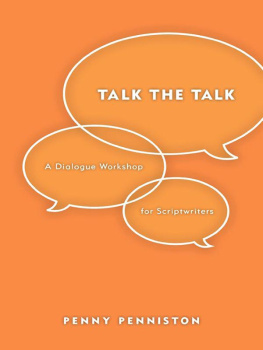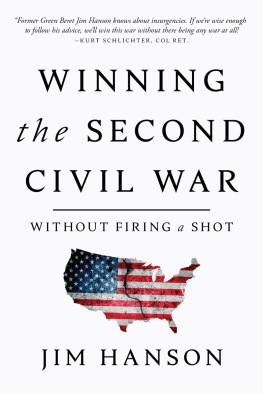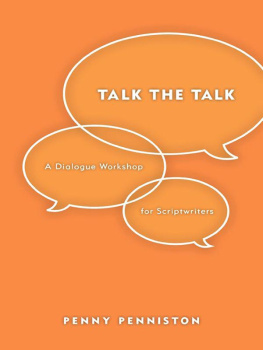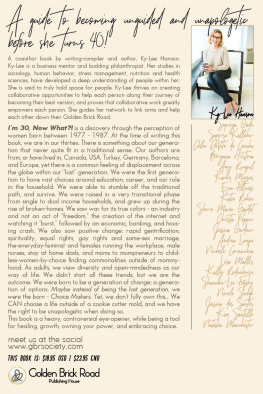Contents
She Sat He Stood
What Do Your Characters Do While They Talk?
Ginger Hanson
Copyright 2014 by Ginger Hanson
All rights reserved.
www.gingerhanson.com
Cover Design by Su Kopil
Published by www.saderrapublishing.com
ISBN: 978-0-9860557-5-1
Digital Edition 1.0
Introduction
The idea for this book grew out of my experiences judging writing contests. During the past sixteen years, Ive judged forty-three contests with a total of 300 entries. The contest entries spanned the gamut of writing from poetry to novels and were usually written by aspiring writers. A common thread running through many of these manuscripts is how often the writers miss opportunities to incorporate setting, props, and body language into their dialogue. I found their characters tended to sit, stand, and look out windowswhich led to my title, of course.
The content of this book evolved from workshops I presented at regional and national writers conferences, as well as extended workshops offered online. Teaching the workshops helped me distill my ideas into a program to train a writer to use setting, props, and body language when writing dialogue for characters. These techniques will help you learn how to delve into your imagination to build strong, three dimensional scenes that add depth to what your characters say and how they say it.
Its my sincere hope these techniques will strengthen your dialogue writing as they have strengthened mine. Since each of us approaches the task of writing differently, you may not incorporate all of the ideas into your writing, but I hope youll find a few gems to treasure.
Few writers come to this profession talented in every aspect of writing. Most writers work hard at their craft, training themselves to be better at their profession with each word they write. If dialogue is your weakness, dont despair. This book is designed to take a weakness and turn it into a strength.
As painlessly as possible.
Turning Weakness into Strength
Im an expert at turning writing weaknesses into strengths. To paraphrase Harrison Ford from Six Days Seven Nights, I have been writing a long, long, long, long, long, long time. Ive always had writing talent, but I had to learn storytelling techniques such as pacing, dialogue, and character growth. You name it and Ive worked at improving it.
Heres a basic learning tip. You dont get better at something if you dont do it. There isnt a pitcher in the major leagues who hasnt thrown thousands of pitches before earning a position in the line up. Or a catcher who hasnt caught thousands of pitches.
You may or may not have noticed in my bio that I earned a Master of Science in Education and taught college level history. The beauty of an education degree is exposure to the research on how humans learn. Although there are different pathways to learning, our brains learn by repetition.
Think about how slow a trainee grocery store cashier performs during the first days on the job. No one wants to be in that line at the grocery store. Who has the time to wait while the cashier fumbles around? And yet, a few weeks on the job and the cashiers proficiency draws you to that same line. How has this happened?
Repetition. The cashier became proficient at the job by doing it.
From cashiers to firefighters, repetition is the key to learning how to do something well. Lets look at how the concept of repetitive training can be used by writers to improve their writing skills.
How It Works
Heres how it works. First, you train your brain to think in certain ways to help you create better scenes. Then you keep practicing these techniques, training your brain, until you master the technique. You might go slow at first, need lots of notes or lists or other prompts, like that new cashier, but the more you practice, the easier it will become. Eventually, youll train yourself, in this case, to use setting, props, and body language when you write dialogue. It will become second nature. Youll have dialogue that sparkles!
Thats pretty much what were going to do in this book. Were going to learn how to think in ways that will create richer dialogue that will in turn enhance your story. The process will teach you to think like a director, a prop master, and an actor.
How are we going to do this? By borrowing techniques from the world of plays and movies, as well as the scientific fields of human behavior and body language. By the end of the book youll have turned a weakness into a strength. Which is exactly why youre reading this, right?
An Author Note
Check the bibliography for complete reference listings to include website addresses.
Handouts mentioned in the text are available on my website, www.gingerhanson.com. Click For Writers on the menu.
Exercises
Exercises at the end of the chapters are meant to help train you to think in ways that will build stronger dialogue. Im a chart and list person, so Ive also taken my notes and made up some charts for you although in most cases listing works just as well. I hope youll find the exercises relatively simple to complete.
Setting, Setting, and More Setting
Setting is the time and place of the action of a literary work.
The setting carries a lot of weight in storytelling because it puts the reader into your imaginary world. It enables her to step through the door you have opened and enter your story. It also changes constantly in the sense that each scene has its own setting within the overall setting of the story.
For example, your story may be set in the heyday of the cowboy West. This is the pervasive time and location of your story, it colors how the characters think, what they can do, their dialogue, their health, etc. In addition to that general setting, you will design dozens of additional settings for each scene in the book. Perhaps your story stars a schoolmarm and a cowboy. She lives in town, he lives on a ranch. As they interact in different scenes, the smaller scene setting changes offer the writer a variety of ways to incorporate the surroundings into the dialogue. So each scene, while framed by the time period of the late 19th century, will also have its own setting such as the school house, the corral, or the local mercantile store. Each setting is filled with countless opportunities to enrich the dialogue.
Physical setting also includes tone which can have different meanings for a writer. Theres the tone of a persons voice which well discuss later, but there is also the tone of a setting. In this sense, we are talking about the general characteristics of the setting. The tone of a gothic novel is gloomy and frightening and usually features an isolated castle full of danger. The one of a humorous novel is entirely different. The writer uses dialogue to reflect this type of tone, too. Fear would underlie the dialogue of a woman isolated in the scary castle, while silly repartee would play a part in a humorous novel.
In order for you to utilize setting to its fullest when writing dialogue, you need to anchor each scenes location as soon as possible. Not only will this help you weave the setting into the dialogue exchanges, but youll also plant the reader firmly in the time and place of the scene. This keeps reader confusion, as to where the characters are physically, to a minimum and also insures the reader experiences the scene more fully.
Story and script consultant Michael Hauge said that
One of the biggest mistakes screenwriters make is rushing through the opening, rather than allowing enough time for the reader to move from the real world into the fantasy world the writer has created.
This is valuable advice for a fiction writer, too. The overall setting of the book needs to be identified at the opening, but the setting of each scene should be vividly evoked for the reader, too.
Next page










